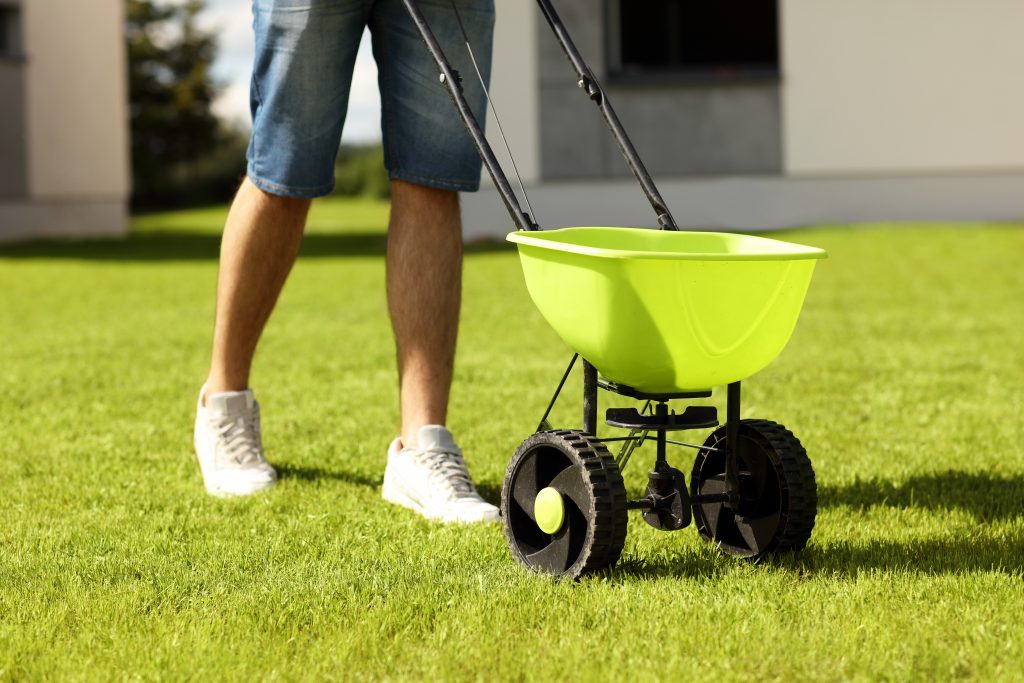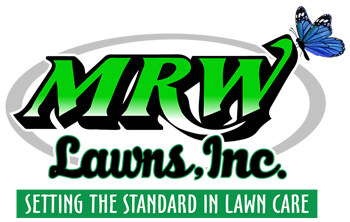We get questions about spring lawn seeding every year. Many people, especially grass seed producers, recommend it, but it may not be the best option. While we can aerate and overseed in the spring, we recommend waiting until the fall for two main reasons. First, the weather in the spring and summer is challenging to seed and new grass. The spring weather can be unpredictably warm or cold, and grass seed needs soil temperatures for germination that are far from guaranteed. Additionally, the grass is in the early stages of growth during the heat of the summer, leaving it susceptible to disease and heat and drought stress. For these reasons, spring lawn seeding is less successful than fall seedings. The second reason is weeds, namely crabgrass. Crabgrass is the most important weed to control throughout the lifetime of the lawn, especially in the first few years of treatment. Because of this, our first application of the year includes a pre-emergent crabgrass control which stops the crabgrass seeds from sprouting by creating a protective barrier of herbicide that kills the crabgrass before it can reach the surface of the soil. It also prevents desirable turfgrass from sprouting, making seeding and crabgrass control almost mutually-exclusive.

Lawn Seeding
Of course, there are exceptions. If a lawn is thin and bare, we may need to be lawn seeding as soon as possible to prevent erosion. These lawns will deal with the same heat, drought, disease, and weeds. We expect a fairly high rate of failure with this sort of spring seeding, necessitating a summer post-emergent crabgrass control and a second, fall seeding, but at least the soil won’t disappear over the summer. Luckily, you can help protect the investment of a spring seeding. Watering is extremely important. Not only does the seed need water to germinate, but the young grass needs a lot of water to survive the heat and drought of summer. Closely following our watering instructions may lower your water pressure and increase your utility bills, but it’s the best bet for keeping your new lawn alive. A good watering schedule is also the first step in combatting the lawn’s second enemy, disease. Watering at the right time of day will reduce the conditions needed for fungal growth in the lawn. Our Fungicide Program will also give your grass an edge against disease. If you do need a spring seeding, it is best done in March and April, skipping the pre-emergent crabgrass control.
“I need a nice-looking lawn for a summer event,” “My son is getting married,” and “My daughter is graduating,” are all familiar reasons to look into a spring seeding. The good news is, we can absolutely get your lawn into great shape in time for a summer event. The bad news is, we won’t be doing it with seed. For a quick turnaround and better results, you’re going to need sod. Sod will take as much, if not more water, but it is somewhat more resistant to weeds, disease, and the heat of the summer. I know that all sounds positive, but the bad part is that it’s quite a bit pricier.
If you have enough grass to prevent erosion and don’t need a perfect carpet this summer, you might want to consider core aeration without seed. We can aerate in spring or fall because of the favorable temperatures. Aeration is one of those things that benefit the lawn season after season. Your lawn should be fine without aeration, but it will be even better with regular aeration. However, if we are working to fill in the lawn, it may be a better investment for you to wait on the aeration until it can be paired with an overseeding in the fall.

